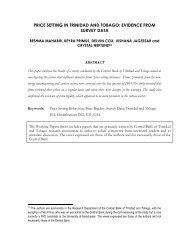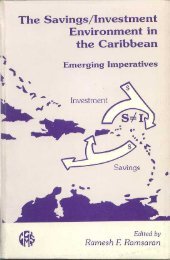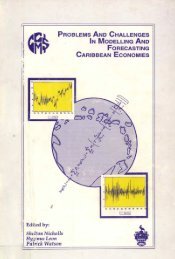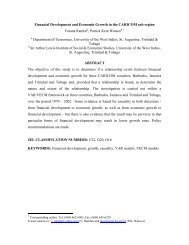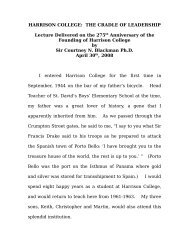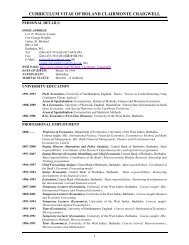Download
Download
Download
You also want an ePaper? Increase the reach of your titles
YUMPU automatically turns print PDFs into web optimized ePapers that Google loves.
70 / BUSINESS, FINANCE & ECONOMICS IN EMERGING ECONOMIES VOL. 2, NO. 1, 2007<br />
of the monetary policy analysis are discussed in Sections 4 and 5. The<br />
policy implications of the results and the conclusion are presented<br />
in Section 6.<br />
2.0 Literature Review<br />
The phenomenon of dollarization has been studied since the<br />
1970s. These early studies could not distinguish between the motives of<br />
currency and asset substitution because of the assumption of a choice<br />
from only two assets: domestic and foreign currency. This assumption<br />
was considered reasonable within a framework of restricted capital<br />
mobility. Early models, including Calvo and Rodriguez (1977), primarily<br />
considered the implications of currency substitution for money demand,<br />
exchange rate determination and the conduct of monetary policy. Calvo<br />
and Rodriguez (1977) developed a two-sector model of exchange rate<br />
determination for a small open economy where residents held both the<br />
domestic and foreign currency, had rational expectations, and prices<br />
were fully exible. Residents maximized real nancial wealth W, in<br />
the foreign currency:<br />
W=M/E + M*,<br />
where M is the domestic money, M* is foreign money and E is the<br />
nominal exchange rate. 6<br />
Later research re-examined the currency substitution issue by<br />
specifying asset portfolio balance models. These models improved on the<br />
earlier work by explicitly assuming the existence of bonds denominated<br />
in each currency. Cuddington (1983) outlined that domestic residents’<br />
demand for foreign money was distinct from their demand for foreign<br />
non-monetary assets. The demand for the non-monetary asset was<br />
specied as a function of real income and the real return of the asset.<br />
As a result, Cuddington’s model facilitated the empirical estimation of<br />
domestic money demand with the inclusion of both currency and asset<br />
substitution. A shortcoming of the model, however, was the inability to<br />
explain the relevance of currency substitution, particularly in the context<br />
where interest-bearing bonds were available.<br />
6 See Piontkovsky (2003).



